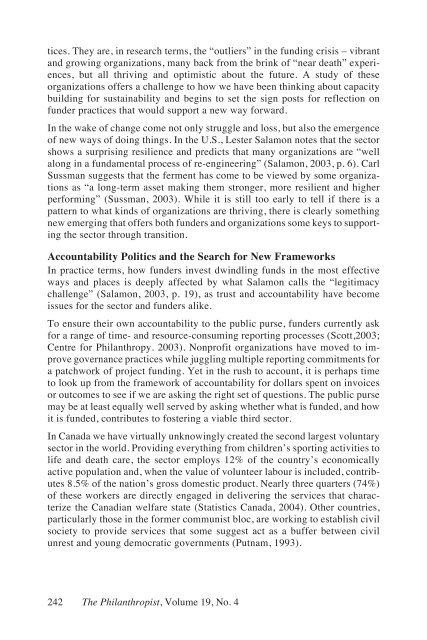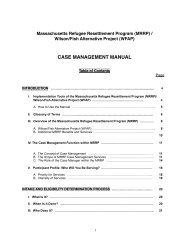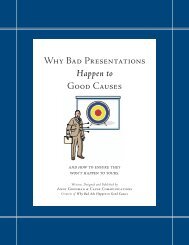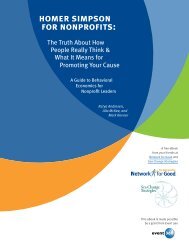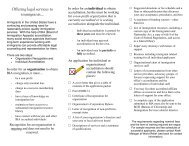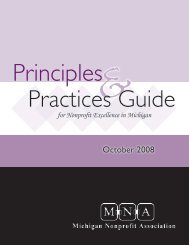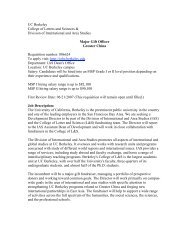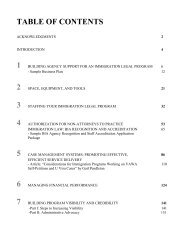Print this article - The Philanthropist
Print this article - The Philanthropist
Print this article - The Philanthropist
Create successful ePaper yourself
Turn your PDF publications into a flip-book with our unique Google optimized e-Paper software.
tices. <strong>The</strong>y are, in research terms, the “outliers” in the funding crisis – vibrant<br />
and growing organizations, many back from the brink of “near death” experiences,<br />
but all thriving and optimistic about the future. A study of these<br />
organizations offers a challenge to how we have been thinking about capacity<br />
building for sustainability and begins to set the sign posts for reflection on<br />
funder practices that would support a new way forward.<br />
In the wake of change come not only struggle and loss, but also the emergence<br />
of new ways of doing things. In the U.S., Lester Salamon notes that the sector<br />
shows a surprising resilience and predicts that many organizations are “well<br />
along in a fundamental process of re-engineering” (Salamon, 2003, p. 6). Carl<br />
Sussman suggests that the ferment has come to be viewed by some organizations<br />
as “a long-term asset making them stronger, more resilient and higher<br />
performing” (Sussman, 2003). While it is still too early to tell if there is a<br />
pattern to what kinds of organizations are thriving, there is clearly something<br />
new emerging that offers both funders and organizations some keys to supporting<br />
the sector through transition.<br />
Accountability Politics and the Search for New Frameworks<br />
In practice terms, how funders invest dwindling funds in the most effective<br />
ways and places is deeply affected by what Salamon calls the “legitimacy<br />
challenge” (Salamon, 2003, p. 19), as trust and accountability have become<br />
issues for the sector and funders alike.<br />
To ensure their own accountability to the public purse, funders currently ask<br />
for a range of time- and resource-consuming reporting processes (Scott,2003;<br />
Centre for Philanthropy. 2003). Nonprofit organizations have moved to improve<br />
governance practices while juggling multiple reporting commitments for<br />
apatchworkofprojectfunding.Yetintherushtoaccount,itisperhapstime<br />
to look up from the framework of accountability for dollars spent on invoices<br />
or outcomes to see if we are asking the right set of questions. <strong>The</strong> public purse<br />
may be at least equally well served by asking whether what is funded, and how<br />
it is funded, contributes to fostering a viable third sector.<br />
In Canada we have virtually unknowingly created the second largest voluntary<br />
sector in the world. Providing everything from children’s sporting activities to<br />
life and death care, the sector employs 12% of the country’s economically<br />
active population and, when the value of volunteer labour is included, contributes<br />
8.5% of the nation’s gross domestic product. Nearly three quarters (74%)<br />
of these workers are directly engaged in delivering the services that characterize<br />
the Canadian welfare state (Statistics Canada, 2004). Other countries,<br />
particularly those in the former communist bloc, are working to establish civil<br />
society to provide services that some suggest act as a buffer between civil<br />
unrest and young democratic governments (Putnam, 1993).<br />
242 <strong>The</strong> <strong>Philanthropist</strong>, Volume 19, No. 4


